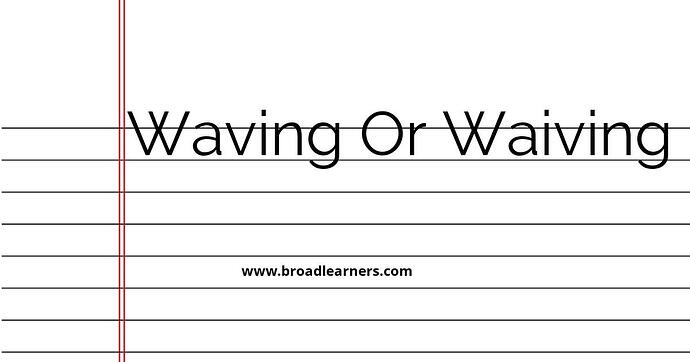'Waving', 'waiving', and 'wavering' are commonly confused words in English grammar. Understanding the difference between 'waving', 'waiving', and 'wavering' is important to use them correctly in written and spoken English.
'Waving' is a verb that refers to the action of moving your hand or an object back and forth in a greeting or as a signal.
'Waiving' is a verb that means to give up, relinquish, or not enforce a right, claim, or requirement.
'Wavering' is a verb that means to hesitate or be indecisive in making a choice or decision.
Let's take a closer look at the meanings and usage of 'waving', 'waiving', and 'wavering'.
| 'Waving' | 'Waiving' | 'Wavering' |
|---|---|---|
| The word 'waving' is used to describe the action of moving your hand or an object back and forth in a greeting or as a signal. | The word 'waiving' is used to describe the act of giving up, relinquishing, or not enforcing a right, claim, or requirement. | The word 'wavering' is used to describe the act of hesitating or being indecisive in making a choice or decision. |
|
|
|
To remember the difference between 'waving', 'waiving', and 'wavering', it can be helpful to associate each word with its specific meaning:
- 'Waving' - Think of waving your hand or an object back and forth in a greeting or as a signal.
- 'Waiving' - Think of waiving a right, claim, or requirement, like giving it up or not enforcing it.
- 'Wavering' - Think of being indecisive or hesitating in making a choice or decision.
Here are some examples of correct usage:
- I saw my friend waving at me from across the street.
- The company decided to waive the membership fee for new customers.
- She was wavering between two job offers before making her decision.
Remembering the correct usage of 'waving', 'waiving', and 'wavering' will improve your grammar and communication skills.
